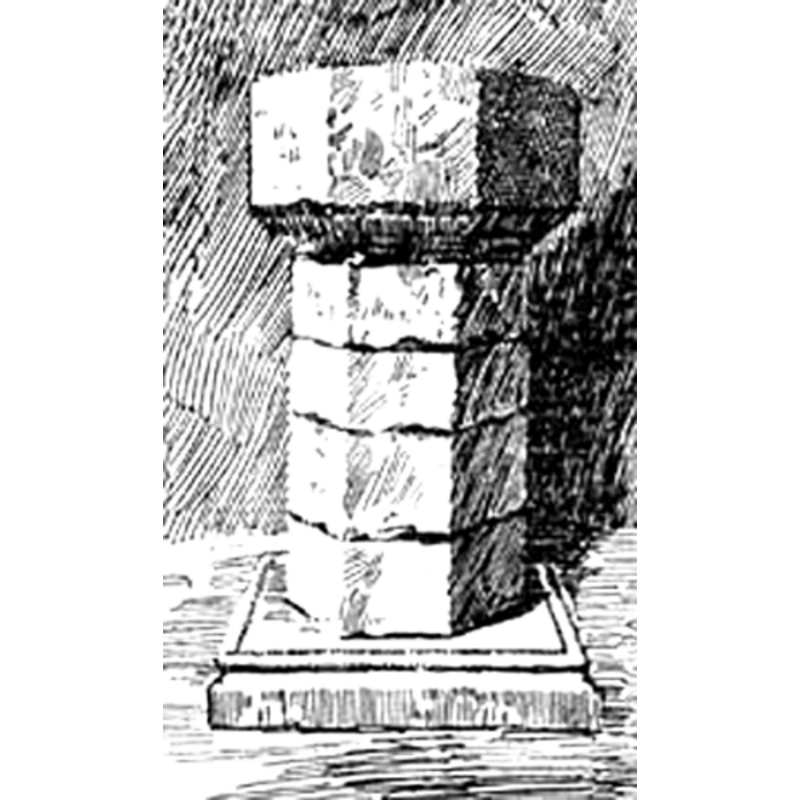Oxton No. 2

Image copyright © [in the public domain]
PD
Results: 1 records
INFORMATION
FontID: 15498OXT
Object Type: Baptismal Font1
Church/Chapel: Parish Church of St. Peter
Church Patron Saints: St. Peter
Country Name: England
Location: Nottinghamshire, East Midlands
Directions to Site: Located 8 km N of Lowdham
Font Location in Church: [cf. FontNotes]
Century and Period: 13th - 16th century, Medieval
Cognate Fonts: [cf. FontNotes]
Font Notes:
Click to view
Baylay (1908) includes a description by the Rev. W. Laycock: "The old font of Oxton Church has, until recently, been doing duty as a pump trough. Twenty-four years ago it was sold from the vicarage garden. It is octagonal, in a rough state, with no sign whatever of any inscription or carving on it. It is of the same character as the Lutterworth old Wycliffe Font now in Leicester Museum. Its age may be from 650 to 700 years. It is now in the church resting on stones equally as old as itself, and which have been, none can tell for how long, in the vicarage grounds. Doubts are raised as to these stones forming the original base. Of one stone, however, there is no doubt whatever. It plainly carries with it its own evidence. This venerable font may have been cast out in Cromwell's day, The present font is of the Charles II. pattern and period. From its decayed condition, as described in 1842, one can realize this statement to be correct." An article in The Mansfield Reporter of August 1912 notes the baptismal fonts in this church: "Of these Oxton possesses three, two having been recovered in recent years through the energy of the present Vicar" [cf. Index entry for Oxton No. 1 for the earliest of the three, a Norman font]. The second oldest font is described and illustrated in this same source: "The next, the one illustrated, has a small octagonal bowl on an octagonal stem. Considerable doubt exists as to the age of this font, many considering it to be older than any existing part of the church, but it must be borne in mind that absence of ornament does not necessarily mean great antiquity, for from the latter part of the 14th century and onwards numbers of plain fonts were put in parish churches. Against its being an 11th century or 12th century font also is its shape and size; the octagonal shape not being in use at that date, and the early fonts being large enough for total immersion, whereas the bowl of this is only about 15in. across, and some 51/2in. deep. On the rim likewise are no marks of where the irons fitted for the font cover. Supposing that Oxton had run to excess, and parted with their old font they would have to provide a new one, and the Puritan fervour ran high in the village as the following shows:—On June 27th, 1585, a young man Thomas Walker, alias Custance, and a young woman, Margery Bell, came with a number of the Oxton villagers to the church, and there went through the whole of the baptismal service and dipped a lamb in the font. This act was done to bring contempt on the old sacrament of baptism, and possibly in good faith that they were thereby showing their protectant zeal against any relic of Roman Catholicism. No steps were taken to punish the offenders until the 27th of September following, when they were brought before the Chapter of Southwell. They were then sentenced to do penance in the church on the next Sunday, and on the Wednesday and Thursday following, to repeat the penance in the market-places of Newark and Mansfield. This octagonal font we have been discussing was in all probability the identical font used for the desecration. In turn this font was thrown out of the church, and twenty-four years ago was sold from the vicarage garden. It then did duty as a pump trough until rescued by the present vicar." Noted in Cox (1912) as "recently recovered by vicar". Guilford (1927) writes: "The old font has recently been discovered, thanks to the vicar, whose energies in this direction should commend themselves to all antiquaries." No font mentioned for this church in Pevsner & Williamson (1979).
MEDIUM AND MEASUREMENTS
Material: stone
Font Shape: octagonal (mounted)
Basin Interior Shape: round
Basin Exterior Shape: octagonal
REFERENCES
"Oxton and its church", August 1912, The Mansfield Reporter, 1912
Baylay, Atwell M.Y., "Summer excursion 1908: Oxton and its church", 12 (1908), Transactions of the Thoroton Society, 1908
Cox, John Charles, Nottinghamshire, London: Allen, 1912
Guilford, Everard Leaver, Nottinghamshire, London: Methuen, 1927